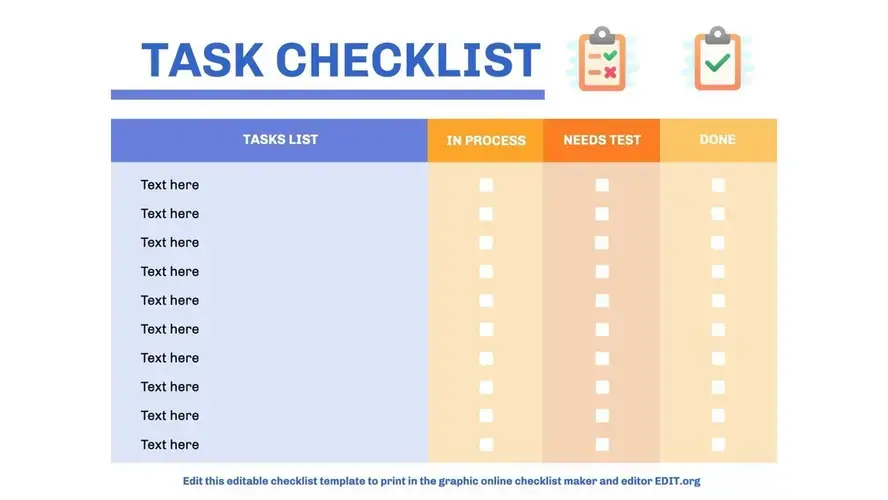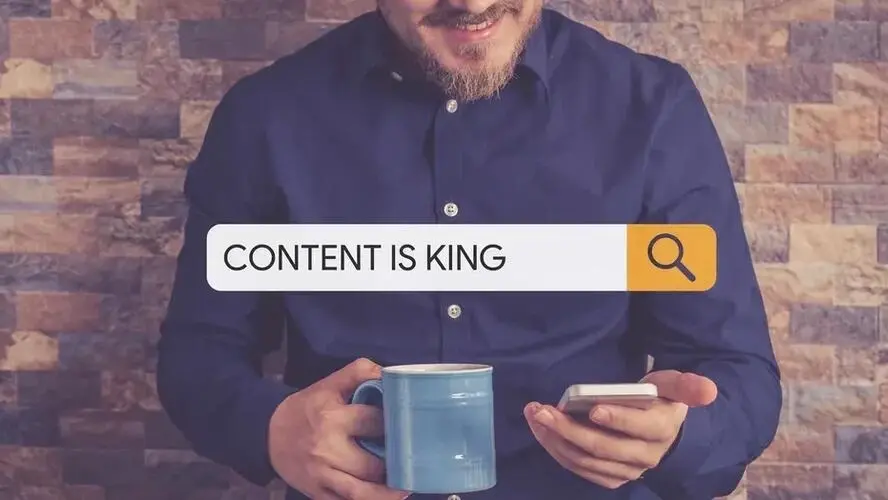Creating useful and engaging content for your website is a lot easier said than done. Whether it’s text, images, or media, it's hard to come up with quality content ideas that will get users to your site, provide meaningful experiences, and move the needle for your marketing efforts.
Fortunately for you, I've done the research to determine the best content to attract users and influence their buying decisions so you can achieve better results.
These ideas will make it easier for you to start publishing on a regular basis so you can maximize website traffics, brand awareness, and sales.
Without further ado, here are 7 website content ideas you can use to start growing your business today.
1. How-To Guides
When done right, how-to guides can be great for boosting traffic and engagement. They are relatively easy to create, all you have to do is address customer problems in-depth while optimizing the content for important keyword phrases. This will allow you to filter your website traffic down to the ideal customers you want to sell to most.
These types of instructional articles also allow for a lot of formatting flexibility which makes them practical and universal, as well as extremely shareable. Readers will be able to quickly scan the article to get the important information, and those who find the guide helpful in their own life will naturally want to share the information with their friends and family to spread that knowledge.
Another reason why this type of content has become so popular is that it can be used for both acquisition and retention of customers.
Since how-to guides generally focus on early-stage leads, you can use them to help you generate more visibility for your brand online. It's a great way to one-up the competition and showcase your expertise on the subject.
If you can show users that you offer better, more detailed, and more practically useful content, it gives you an edge over the competition and helps you stand out as the best solution to their problems.
Here are a few best practices for writing how-to guides:
- Make your post at least 1,500 words
- Solve a clear problem for a specific audience
- Break up information visually using bullet points, images, screenshots, quotes, etc.
Pro Tip: Create a series of guides to address different, yet related problems - this way you can always compile your guides into an eBook and use it as a lead magnet to build your email list.
2. Infographics
Another great content idea is to design comprehensive infographics for your business. The reason why your business exists in the first place is to solve problems for your customers, and in addition to creating how-to guides, you can also create engaging infographics to share important information in a way that is both visually attractive and easy to digest.
If you regularly share complex information, infographics can make it easier for your readers to understand and retain it.
Humans are largely visual creatures, and studies have shown that people retain more visual information than written or spoken information.

Creating infographics will help you leave a strong impression on your customers, and because infographics are easily shareable, it will take your marketing efforts even further and expand the reach of your content.
The best part about creating infographics is that you can use them on any marketing channel, including blogs, websites, eBooks, reports, case studies, social media, email, etc.
To create impactful infographics, make sure to add valuable insights and relevant images. Also, include precise charts or graphs, and add short textual content. Use vibrant colors to make your infographics stand out and choose fonts and styles that make it easier to read the text.
If you’re not skilled in visual design, never fear. There are a lot of free online tools you can use to create your infographics, and none of them require any technical knowledge.
Here are three of my favorites:
Venngage
The best free infographic maker with professional templates.Piktochart
A flexible infographic creator with advanced features.Canva
A user-friendly software that simplifies infographic creation for beginner.
3. eBooks
Another great content idea is to write an eBook focused on your area of expertise. eBooks are usually between 20 and 50 pages long, but you can make it longer if you want.
You can sell your eBook or give it away as a freebie or lead magnet to help you build your email list. The best part is that you can use your eBook as a powerful marketing tool that will allow you to make money from it even if you choose to give it away for free.
For example, you can include affiliate links within your eBook so that you'll get paid a commission when readers click on the link to purchase the recommended product.
You can also promote your other products or services within the eBook. For example, you can promote your online course, membership website, merch, etc.
Whether you sell your eBook or give it away for free, or the monetization method you choose, an eBook will get you lots of exposure for your business.
4. Case Studies and Testimonials
Customers only buy from people they trust, and establishing your credibility online is a great way to build trust with your customers. An effective way to do this is by publishing case studies and testimonials.
A case study is an in-depth report detailing how your product or service helped solve a specific problem for a particular customer.
A testimonial, on the other hand, is a brief statement that highlights important aspects of your product or service.
Unlike reviews, which customers typically read after they have already made up their minds to purchase the product, case studies and testimonials can be very persuasive in helping you influence the buying decisions of potential customers.
These types of content can be in written form or video form. You can use them as standalone content pieces or incorporate them into longer articles.
Testimonials, in particular, are very effective forms of social proof that can be used to eliminate potential trust issues between buyers and your brand.
You can post testimonials on your website or social media to help boost your conversions by showcasing the before-and-after experience of your happy and satisfied product users.
5. Checklists and Cheat Sheets
Also known as cheat sheets, checklists are a practical type of content that is easy to scan. They're perfect to help readers keep track of important information so they don't forget anything.
You can use checklists on their own, as standalone pieces of content, or you can incorporate them into longer articles, such as how-to guides, case studies, and eBooks.
Here’s an example of a checklist template:

Checklists come in a variety of forms, including:
Images;
PDFs; and
Webpages.
However, they all share a common purpose, which is to provide a set of instructions or guidelines that is easy for people to remember and reference when they need to take on a specific project or task.
Putting information in a simple list format makes it easy to check items off so your readers can take action on the information they've learned. This can be a potent tool for your business.
Moreover, whenever people are searching for information online, they want it fast. So, if you can provide them with a way to save time while gaining valuable knowledge, you'll get better results from your content marketing.
A great way to get started creating checklists is to go through your longer blog posts, such as how-to guides, and create a checklist from the most important points in each article.
6. Incorporate User-Generated Content
Creating and publishing content regularly is a challenge for most businesses. But, most businesses fail to understand that their customers are also creating a lot of amazing content for them.
User-generated content (UGC) is any type of content that is created by your customers, prospects, or audience voluntarily. This type of content is easy to generate because people love being featured online and feeling special.
You can go a step further and find ways to encourage people to share more content on your website or social media.
Here are some ways to increase user-generated content:
Start a Hashtag Trend
You can ask users to share their experience of using your product on social media and encourage followers and fans to contribute content using the unique hashtag you’ve created.Ask a Question
Simply post a thought-provoking question and encourage your followers to answer and tag you in the post.Offer Rewards
Sometimes you have to incentivize people to share their experience on your website or social media.
As you can see, this presents a huge opportunity for you to harness all that content and use it to market your business more effectively. You can repost user-generated content on your website to plug the gaps whenever you run out of fresh content.
7. Look for Guest Bloggers
Guest blogging has long been proven to be an extremely effective way to drive targeted website traffic. It’s also a great tactic to get a consistent flow of content to your own website.
Allowing guest posts on your site will give you access to entirely new audiences from those bloggers who will likely promote their new posts on their own websites and social media profiles.
It’s also a great strategy to build your credibility with influencer relationships. When you get someone respected to guest post on your blog, it gives you instant credibility
To get guest bloggers, you'll have to look for industry experts, successful business owners, or authority bloggers in your niche (or in different niches related to yours) and invite them to write posts to publish on your blog.
You can also add a "Write for us" page to your website so you can be found by people who are searching for guest posting opportunities.
As your blog grows in popularity, you'll find that you won't have to actively search for people to guest blog on your site. They will come to you in droves, and you may have to end up choosing who to allow to post on your site.
Conclusion
There you have it. 7 content ideas to effectively boost business growth. Use these tips to help you create strategic and compelling content that will draw consumers to your business, help them understand the value of your products, and encourage them to make a purchase.
Over to you. Which of the content ideas listed above do you find the most appealing? Share your thoughts below!
Frequently Asked Questions
How do I produce high-quality content for my blog?
To create amazing content for your fitness blog, you will need to do proper research and take your time. Write fewer posts, but make sure that the ones you’ve written stand out.
What are some popular fashion bloggers?
Here are some popular fashion bloggers you can check out for inspiration: Wendy Nguyen – Wendyslookbook, Claire Goldsworthy – The Fashion Advocate, Lyn Slater – Accidental Icon, Kat Farmer – Does My Bum Look 40, Tami Reed – Talking with Tami, and Gabi Gregg – OG Fat Girl.
Do I need a blogging strategy?
You will achieve rocketing success if you’re able to create an efficient blogging strategy. Make sure you create a great content strategy for your fitness business.
Why should I create a website?
There are many reasons why you should create a website if you’re an artist. You can use it to create a place where people can learn about you, talk about your art, or show off your work.

Ron Stefanski is a website entrepreneur and marketing professor who has a passion for helping people create and market their own online business. You can learn more from him by visiting OneHourProfessor.com
View all posts by Ron Stefanski



















